Repair Module
The Repair Module, available for MakaiPlan Pro and MakaiLay, is a collection of tools and features that will help the operator during cable recovery and repair operations. It can simulate grapnel dragging, installing cables with buoy assemblies attached at the end, and recovering previously laid cables.
Available for…
Other Modules Available
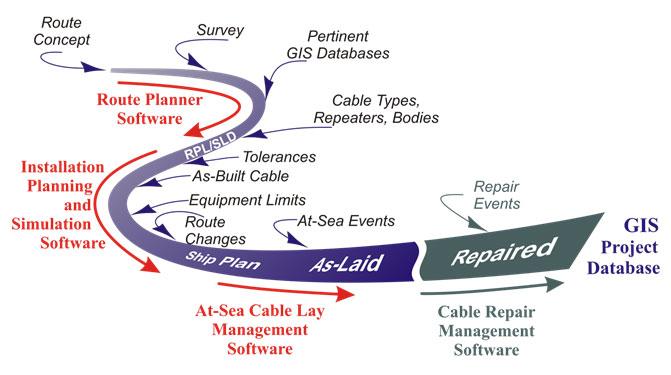
Cable Recovery Operations
The user can load the information about previously installed cables and then model the recovery of that cable using the Repair Module. Just like a regular installation, the cable model takes into account all the instrument measurements and provides a real-time catenary of the cable while it is being recovered. Maintaining a desired working load of tension during retrievals is crucial to:
-
- Maintain safe working conditions which mitigate the risk of cable breakage;
- Prevent damaging the cable by excessively dragging along the seabed;
- Ensure that cable is not being retrieved at zero tension in which case it will become snagged on any bottom outcrops present. By using the cable model, a repair operator can accurately monitor the bottom tension and can consequently recover cable at a much faster rate with confidence that the cable will be recovered with the proper amount of tension.
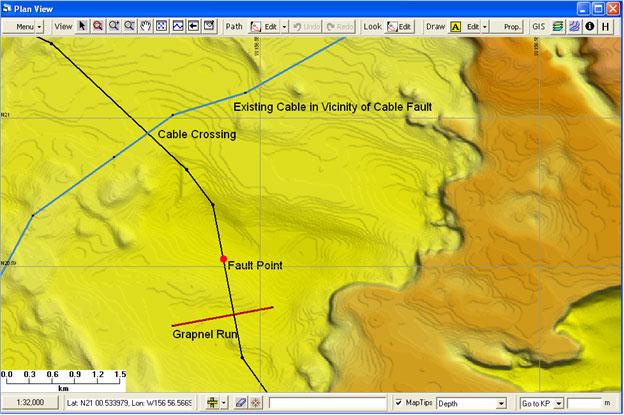
Screenshot of MakaiPlan Pro with the Repair Module, showing grapnel run next to fault location of cable. Other GIS information, such as bathymetry, existing cables in the vicinity, and marine hazards, can also displayed.
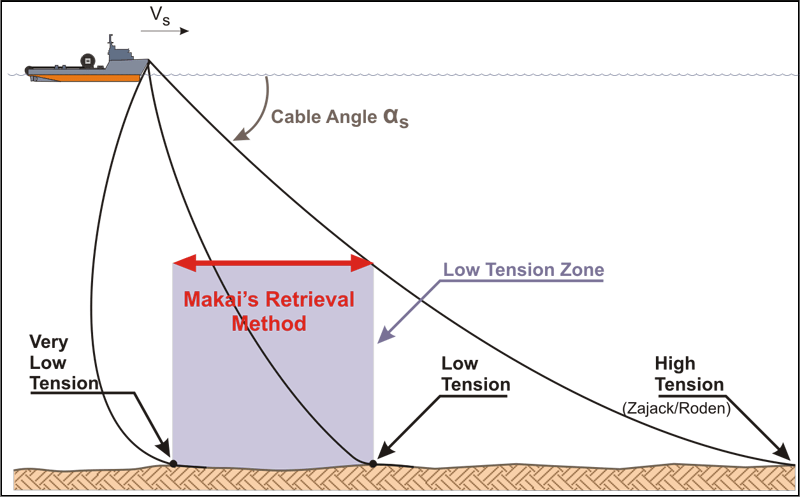
Comparison between conventional retrieval and retrieval using Makai’s cable model. With the confidence of knowing the bottom tension, the installers can increase the retrieval rates and maintain lower tensions.
Faster Cable Retrieval
Maintaining a desired working load of tension during retrievals is crucial to 1) maintain safe working conditions which mitigate the risk of cable breakage, 2) prevent damaging the cable by excessively dragging it along the seabed, and 3) ensure that cable is not being retrieved at zero tension in which case it will loop around any bottom outcrops present . Conventional methods of cable retrieval are based on steady state approximations and do not provide repair operators with an accurate understanding of, or control over, the cable tension at the seabed. Consequently, repair operations are conducted at slow speeds (typically less than 1 knot) and with low top angle (around 60 deg) to ensure that they maintain desired bottom tension. This can become costly when retrieving substantial lengths of cable.
Enhanced Recovery Operations Analysis
The Repair Module includes several tools to mdel and simulate the operations and equipment used to recover and repair submarine cables.
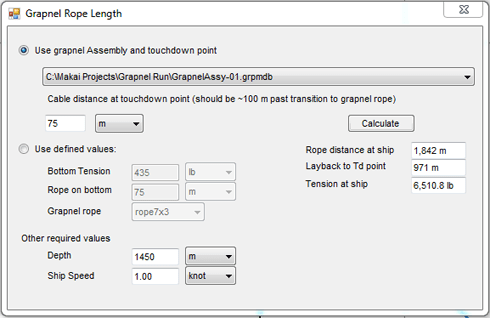
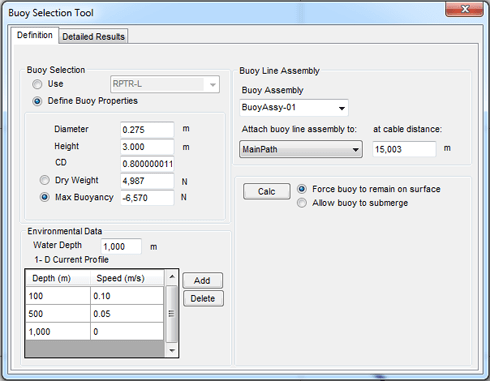
Grappling Operations
The Repair Module allows the users to simulate lowering, landing, and dragging of the grapnel assembly.
More Info
Users can define the grapnel assembly and grapnel route separately. When a new grapnel run is started, the user can quickly draw the route on plan view and calculate the depths along the route from the bathymetry data. An existing grapnel assembly can be reused or a new one can be created. The Repair Module also includes a tool to estimate the grapnel rope length that is required to ensure that the grapnel is being dragged on the bottom to hook the cable to be repaired. The user can specify the ship speed, water depth, and estimated currents to be used in the rope length calculation.
Buoy Operations
The Repair Module allows the users to create buoy assemblies and to append them to the regular cable assemblies.
More Info
This allows users to continue the simulations when the cable is being buoyed off. The Repair Module also includes a tool to estimate the buoy size to ensure that it can carry the weight of the catenary when buoyed off. The user can specify the water depth and estimated currents to be used in the buoy selection calculation.
Interested in Makai’s Submarine Cable Software and Services?
ReACH OUT!
Contact us by sending in this form any time you need professional support or have any questions. You can also fill in the form to leave your comments or feedback for Makai’s team.
